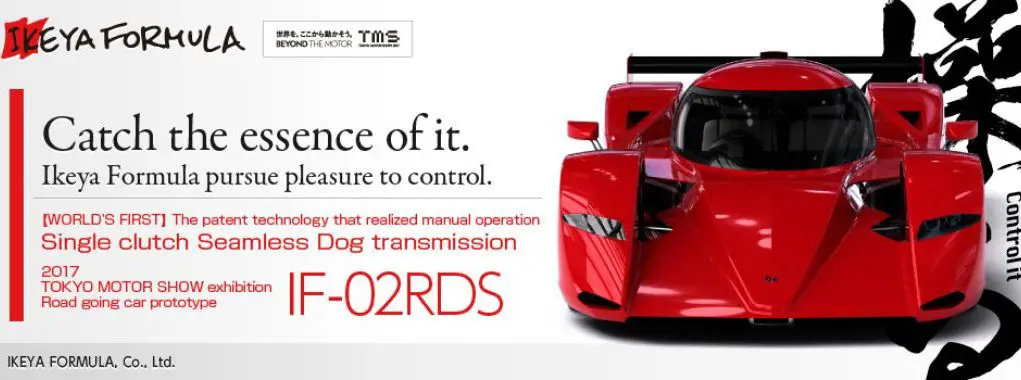Maybe it’s the deep red color or the racecar shape of its body but there is definitely something beautiful and alluring about this one-off Japanese Supercar. The 2017 Tokyo Motor Show is in full swing and that means my twitter timeline is full of rare Japanese cars. This tweet from Autoblog editor and TMS attendee Chris Paukert caught my eye the same way I eye a box of donuts passing the break room. I was transfixed.
Couldn’t resist taking snaps of this rare Ikeya Formula IF-02RDS. Not new, but it’s still enthusiast eye candy. #TMS2017 #TokyoMotorShow pic.twitter.com/ePVvD3AMMj
— Chris Paukert (@CPAutoScribe) October 25, 2017
After a cursory search on the internet, it looks like this car has been in development since 2013. The company Ikeya, according to Car Magazine, has been around since 1968, their main business making custom transmissions and differentials as well as a 600 BHP V10 engine.
A glance at their main website reveals a host of automotive products, mostly related to transmissions. At one point they even had a full aero kit for the Nissan S13.

Check out how smooth one of their prototype transmissions shifts below.
But what really caught my attention was the mention that their’s a turbocharged Honda sourced engine underneath the rear engine cover. According to the Ash Institute, it’s a K20A, a 2.0L naturally aspirated engine in a stock form that also found use in the 2001-2006 Honda Civic Type R. In its most powerful form it made 221 HP and 159 lb-ft. With a bit of help from boost, power levels in this rare breed supercar crest 349 HP. Weighing in at 940 KG (2,072 pounds), that powerful Honda engine isn’t pushing much, even with a driver.
Power is routed to the rear wheels only and there is double wishbone suspension around all four corners. Being a transmission specialist, Ikeya Formula’s five-speed transmission takes care of shifting duties. Being an expert in making transmissions, we expect this unit to be top notch.
Finally, there’s the design, it’s functionally beautiful from every angle. Huge fenders with integrated headlight slits are reminiscent of the Ferrari Enzo. Wind channeling bodywork on the fenders cleans up airflow on this road-hugging machine. NACA ducts on the rear fenders presumably provide cooling for the rear brakes. Outback, dual-tip exhausts exit underneath the rear taillight. A diffuser does quick work of dirty air exiting the underneath the Ikeya. Overall, it’s racecar engineering eye-candy.
I’m glad this car exists and hopefully, someone wrings it around a racetrack soon. The only way this Ikeya would look any better is if it was in motion.




